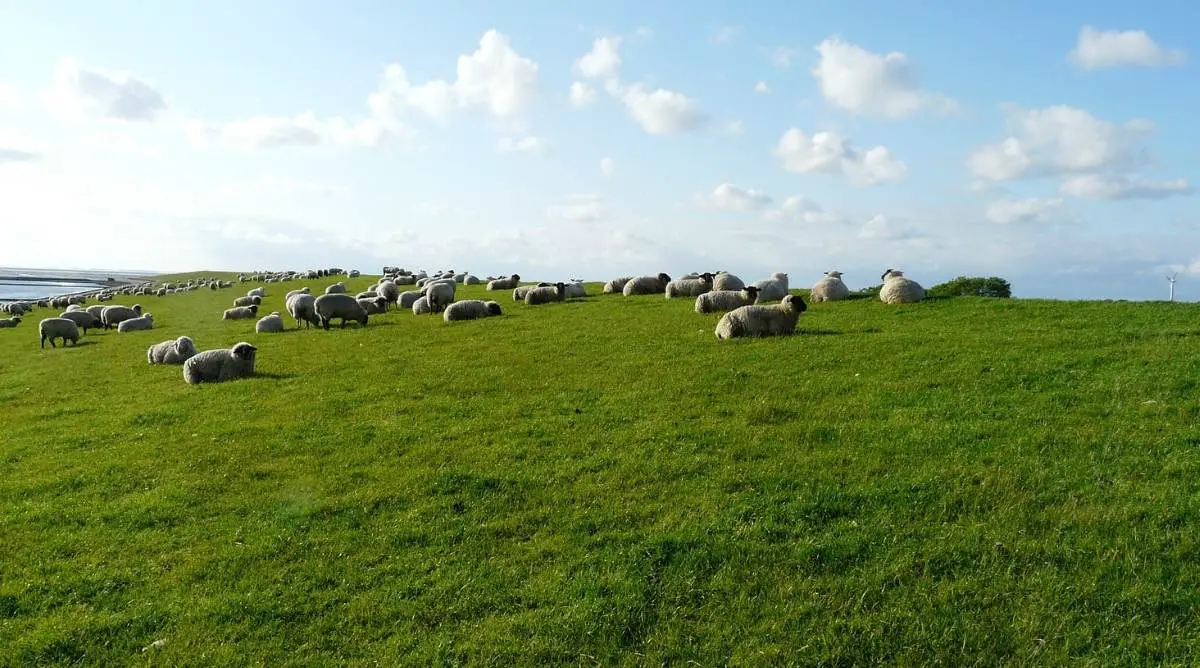Gulf Coast sheep have a high tolerance to extreme heat and humidity and natural resistance to parasites, bacteria and disease, making them well-suited to their typical climate in the southern United States. Gulf Coast sheep are listed as an endangered species by the Livestock Conservancy.
Table of Contents
History
Gulf Coast sheep, also known as Gulf Coast Native sheep, descended from the flocks of sheep Spanish explorers brought to the New World in the early 1500s. They’re now a heritage breed found in parts of the Gulf Coast of the United States ranging from Florida to Texas.
The exact breeds that created the Gulf Coast sheep are unknown, but it’s thought that a mix between Churro sheep and a pre-Merino style breed is likely because of the high-quality, fine wool produced by Gulf Coast sheep.
Characteristics of Gulf Coast Sheep
| Characteristics | Description |
| Origin | Gulf Coast, United States. Descendants of sheep brought by Spanish explorers in the early 1500s. |
| Appearance | Small to medium breed. Open, wool-free faces, bellies, and legs. Commonly white, but darker shades are also seen. |
| Wool | High-quality wool, but low quantities. Fiber fineness averages between 26-32 microns. Staple length ranges from 2.5-4 inches. The fleece is soft, curly, and open, with a low grease content |
| Weight | 200 pounds (Rams), 160 pounds (Ewes) |
| Meat | Tender and full of flavor. Lean. |
| Environment | Gulf coast of the United States. Adapted to hot, humid climates. |
| Common uses | Meat production. |
| Fertility | Gulf Coast sheep can lamb throughout the year. They’re known for their fast growth rate. |
| Endangered | Listed as an endangered species by the Livestock Conservancy. |
| Note | Natural resistance against foot rot and Haemonchus contortus, as well as to internal parasites. |
Gulf Coast sheep are a small to medium-sized breed. They have open, wool-free faces, bellies, and legs. Their wool-free characteristics may be an adaptation to the heavy heat and humidity of the climate they’ve adapted to.
Wool colors vary from white to brown, and even black. In some instances, Gulf Coast fleece is spotted. Rams and ewes may or may not be polled (hornless).
Gulf Coast sheep can lamb throughout the year, and are known for their fast growth rate. Ewes can lamb in pastures without help. Single births are predominant.
Gulf Coast Sheep Wool
Gulf Coast sheep don’t produce much wool, but the wool they produce is fine and high-quality.
Fiber fineness averages between 26 and 32 microns. Staple length ranges between 2.5 and 4 inches. The fleece is soft, curly, and open, and has a low grease content. It’s a favorite among hand spinners. The fabric is ideal for use in blankets or knitted items. It can be worn close to the skin with comfort. The fabric is also successfully used in felting.
Gulf Coast Sheep Meat Production
Gulf Coast sheep are primarily raised for meat production. The meat is lean, tender, and flavorful. There is little waste from carcasses. The flavor of the meat is mild.
Ewes weigh up to 160 pounds. Rams reach around 200 pounds.
Adaptability
Gulf Coast sheep are perfectly suited to the demanding environments in the southern United States. They have successfully adapted to environments that are not generally sheep-friendly. Even temperatures exceeding 100 degrees Fahrenheit don’t disrupt their breeding patterns.
The breed’s biggest advantage is its resistance to various parasites and diseases that spread among sheep in hot and humid climates. Gulf Coast sheep have a natural resistance against foot rot and Haemonchus contortus, as well as to internal parasites.
One herd in Florida has been maintained for decades without the use of dewormers, relying solely on natural resistance.
Endangered Species
The Gulf Coast sheep is listed as an endangered species by the Livestock Conservancy, with an estimated worldwide population of less than 2,000.

